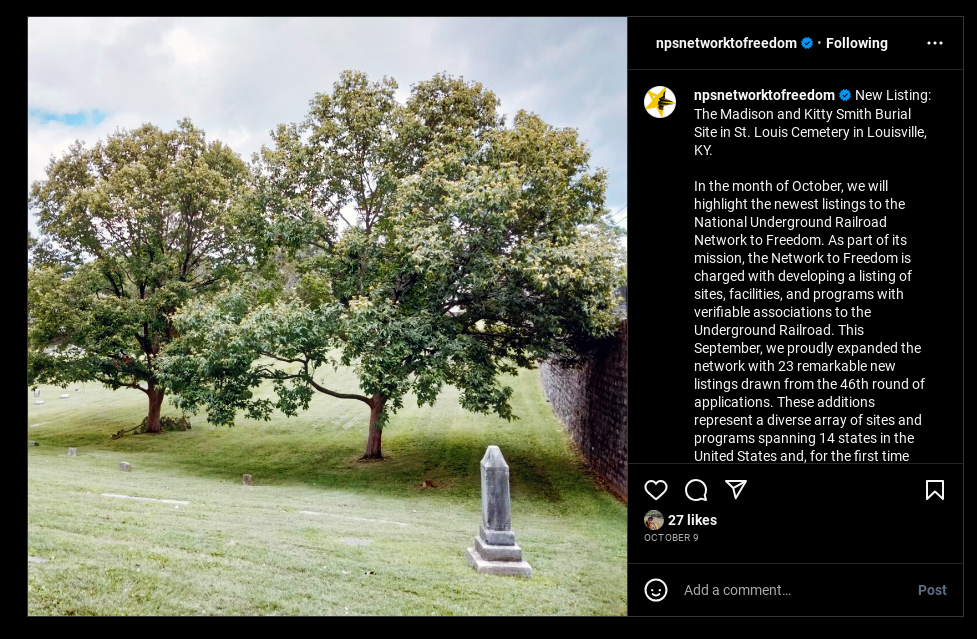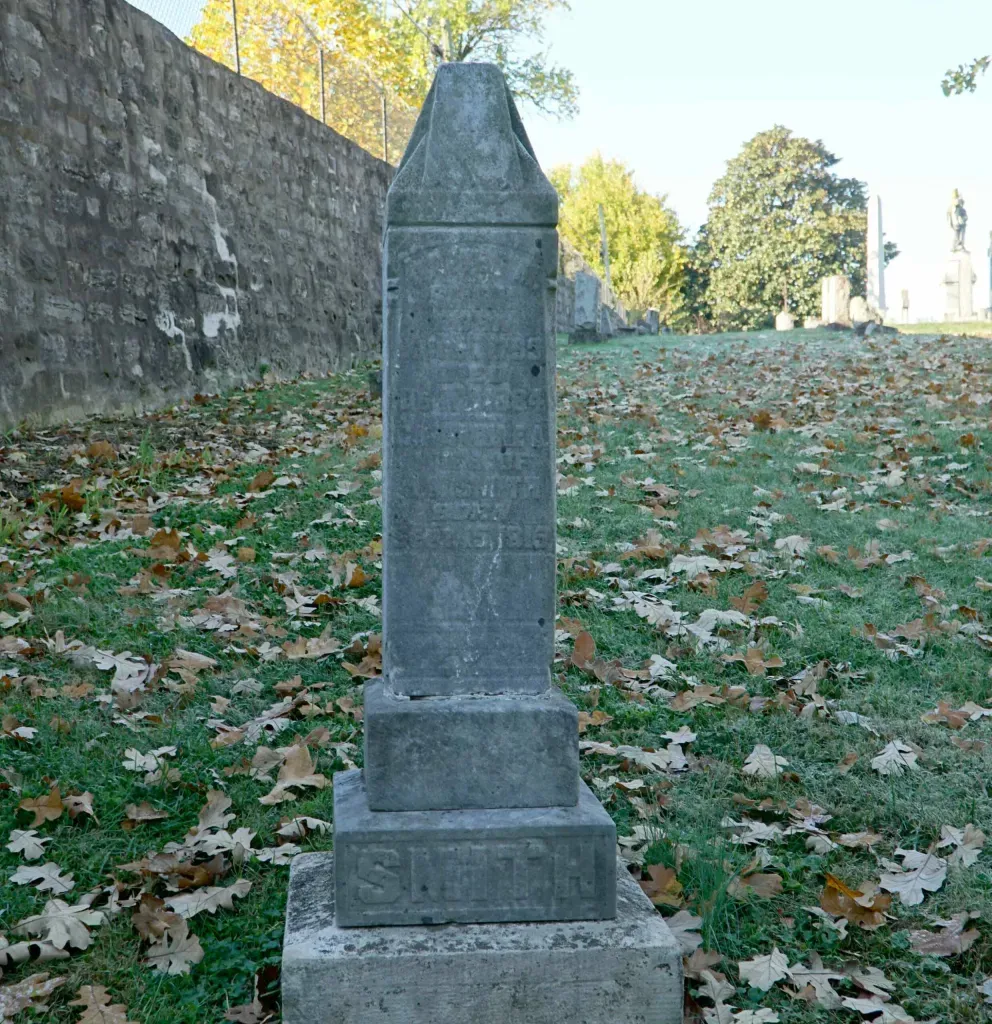A Black Catholic activist couple from Kentucky has been honored by the federal government for their abolitionist activities, part of a crop of new inclusions on the National Underground Railroad Network to Freedom.
The National Park Service (NPS) announced the news on September 27, including sites stretching from Florida to Iowa to Ontario, Canada. The segregated graves of James Madison and Catherine “Kitty” Smith at St. Louis Catholic Cemetery in Louisville are among 23 new listings.
“The Network to Freedom commemorates the courage, resilience and creativity of freedom seekers and provides insight to their struggles against oppression,” said NPS director Chuck Sams.
“Every listing added to the program moves us closer to telling a more complete and inclusive history of our nation and its quest to form a more perfect union.”

Born into slavery in Kentucky near the turn of the 19th century, the Smiths obtained freedom as adults and were married in Louisville by the future bishop Ignatius A. Reynolds in 1837, the beginning of a lifelong faith journey together that would fuel their activism.
The couple moved to the North, across the Ohio River, following the enactment of anti-Black codes in their home state on the cusp of the Civil War. They joined an active abolitionist settlement in Jennings County, Indiana, where they would remain for the rest of their lives.
Their family farm in Geneva Township served as a sanctuary for African Americans who had escaped the South and needed to be hidden from slave catchers and other threats.
“The Smiths risked arrest, violence, or kidnapping and sale back into slavery for their assistance to freedom seekers,” reads a press release on the family’s NPS listing.
“In this rural and mostly white setting, the Smiths maintained their Catholic faith, worshipping at a mission church named St. Patrick’s in Scipio, Indiana. They also maintained their connection to the Black community in Louisville, returning after the end of the Civil War to celebrate events in the lives of their friends and godchildren.”
The couple represents one of the only known intersections between the Catholic community and the traditional understanding of the Underground Railroad, which included multiple paths and various stops leading out of the Deep South during the 18th and 19th centuries.
The new honor for the Smiths is also unique in its egalitarian nature, with Kitty Smith having owned the farm under her own name rather than her husband’s—who was 26 years her senior.
“It is possible, though speculative, that Kitty and her younger relatives played a greater role in shelter freedom seekers, as Madison was aging during the years of their activity,” wrote Deacon Ned Berghausen, a Louisville clergyman who authored the NPS application for the Smiths.
“Kitty remained on the farm for years after Madison’s death. Obviously a black woman would be one of the last people to be recognized for their contributions.”
The wider recognition of African Americans in the Underground Railroad is itself a work in progress, according to Berghausen. The Smiths’ activism, conducted secretly during its time, is itself corroborated by a single written document from the abolitionist Ovid Butler “O. B.” Knapp.
“Scholarship about the Underground Railroad, beginning with Wilbur H. Siebert, has overestimated the role played by white abolitionists like Levi Coffin while devaluing free Blacks like the Smiths,” he wrote.
“It is remarkable to have this one concrete document verifying their role in aiding freedom seekers.”

Berghausen also noted in the NPS application that the ambivalence or hostility of White Catholics—including various slaveholders, including bishops—likely contributed to the Smith’s “heroic work” going unheralded by the Church despite their devout practice of the faith.
It is a change of pace, then, that the new NPS listing has the endorsement of the Archdiocese of Louisville, which owns the cemetery where the Smiths are buried. It is one of several recent Black Catholic archival discoveries publicized by the Church in Louisville, including the life of Mary Narcissa Frederick—a companion of the Smiths who is considered a founding mother of the archdiocese—and the grave of Venerable Augustus Tolton’s grandmother, Matilda Hurd.
Future plans at St. Louis Cemetery include grave markers for other African Americans in the park, where the Smiths are among a minority of families so honored, and educational programs surrounding Black Catholic history.
For now, the Smiths’ plot stands as the most prominent in their section of the graveyard, which Berghausen called fitting.
“Most of the more than one thousand six hundred people here have unmarked graves,” he wrote to the NPS.
“It is appropriate that their graves be marked/permanently included on the Network to Freedom as two of the few Black Catholics recognized for their role on the Underground Railroad.”
Nate Tinner-Williams is co-founder and editor of Black Catholic Messenger.











